Deepfake Prints
Ongoing Exploration. Applying Convolutional Neural Networks to hand-carved block prints and graphics as well as triptych paintings.
Notes on Triptych Paintings:
The perspectival/organizational techniques of early Flemish painting (particularly in religious contexts) were used to convey information to the
illiterate. These techniques used the conventions of drawing at the time to display something understandable to the general populace. In this study,
these Flemish techniques are "mined" for their formal and organizational qualities through the process of the deepfake. Mixing the original with
contemporary patterning/ formal logic. Through this process, the "purity" (purity = original/ the finite amount of information in a drawing) of
drawing is compromised, mixing context and pictographic histories with organization and form. In taking this triptych deepfake "bastard," a new
context emerges. This triptych exists in a digital form, but in translating to a physical form, the deepfake is added on to, negated, and
edited to fit a contemporary "story"
The final "form" of the triptych confuses origin, context, intent, and technique. These confusions lead to the creation of a new pictographic
context and allow the exploration of the image
year: 2020
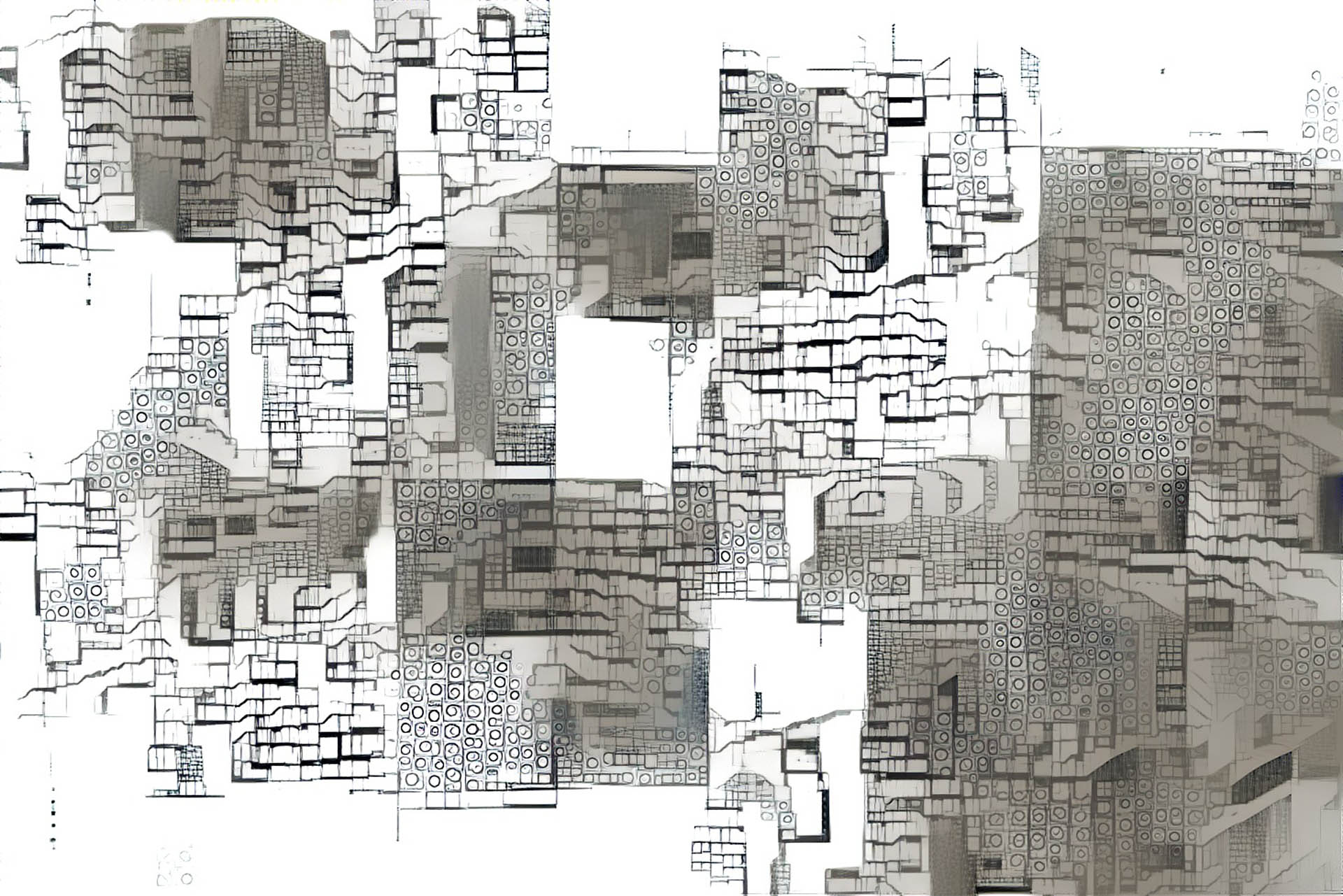
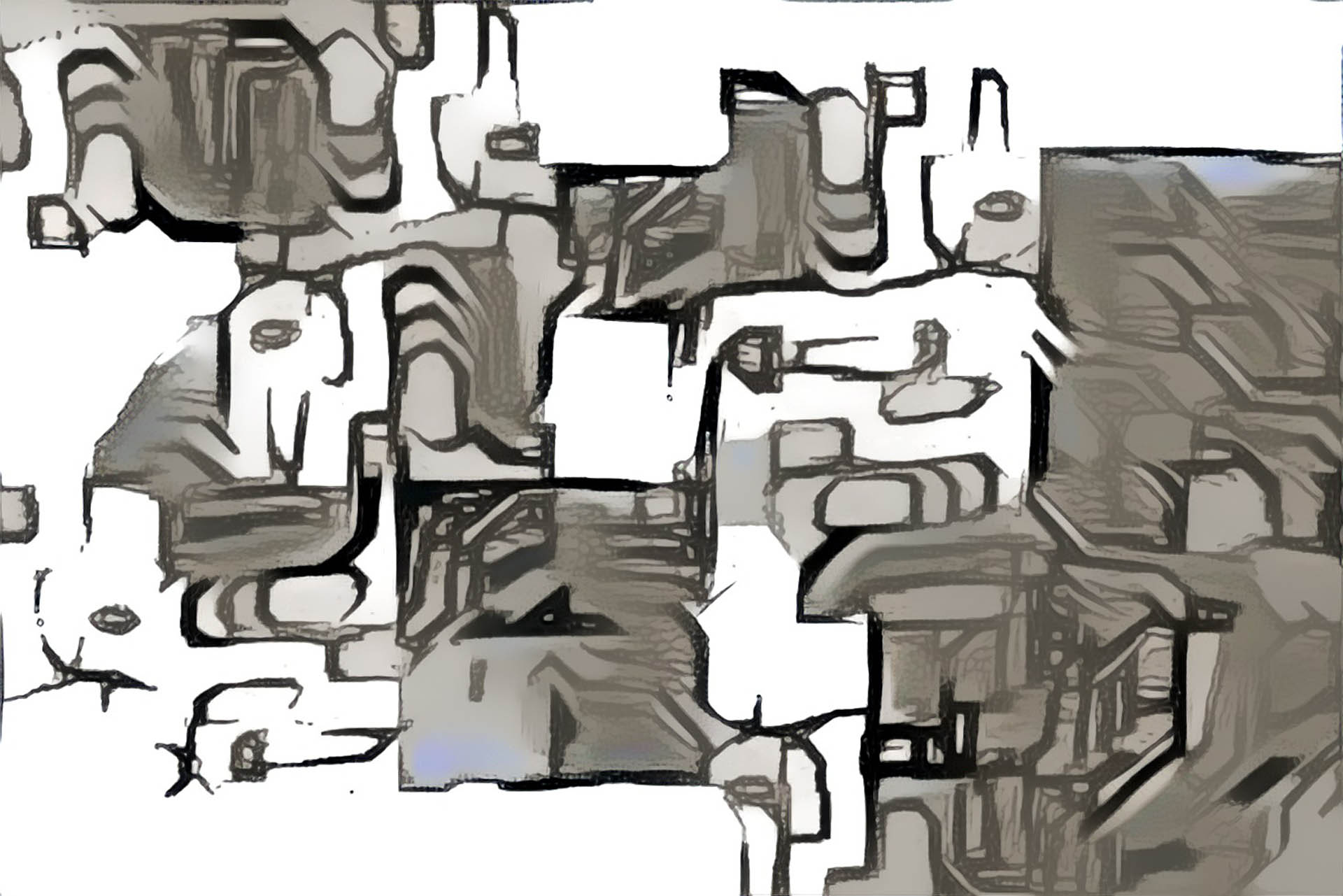
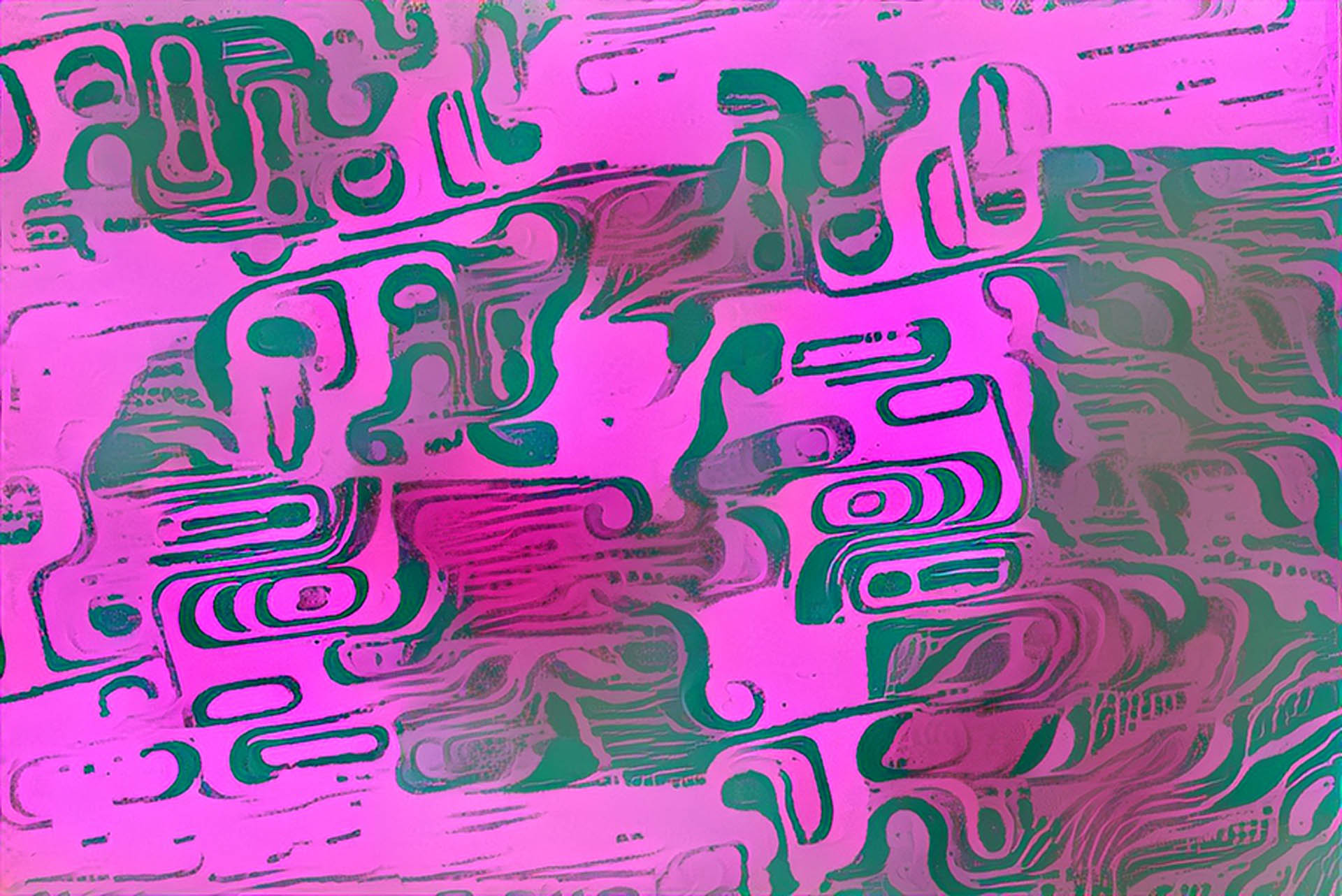
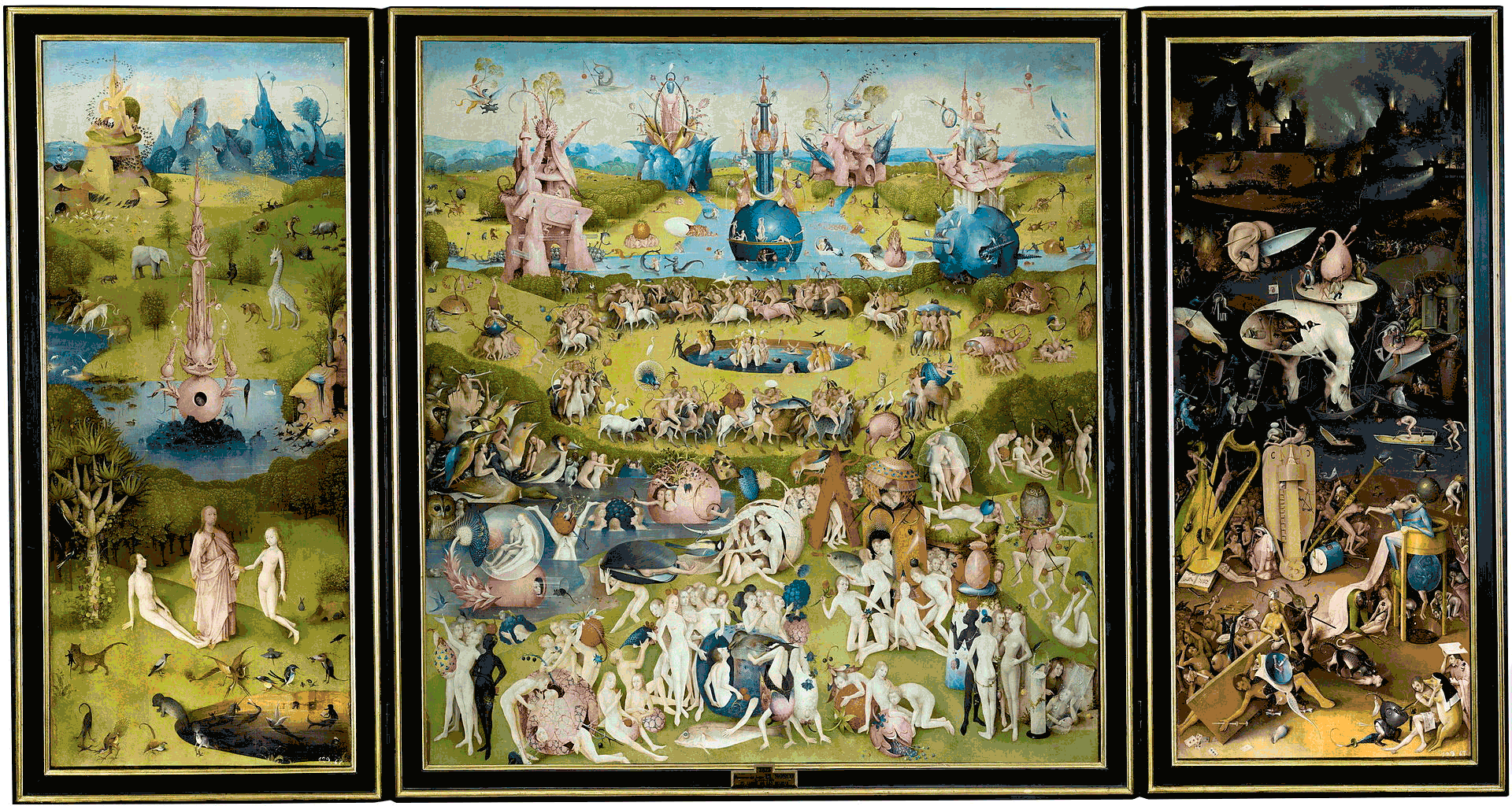 The Garden of Earthly Delights, Hieronymus Bosch
The Garden of Earthly Delights, Hieronymus Bosch
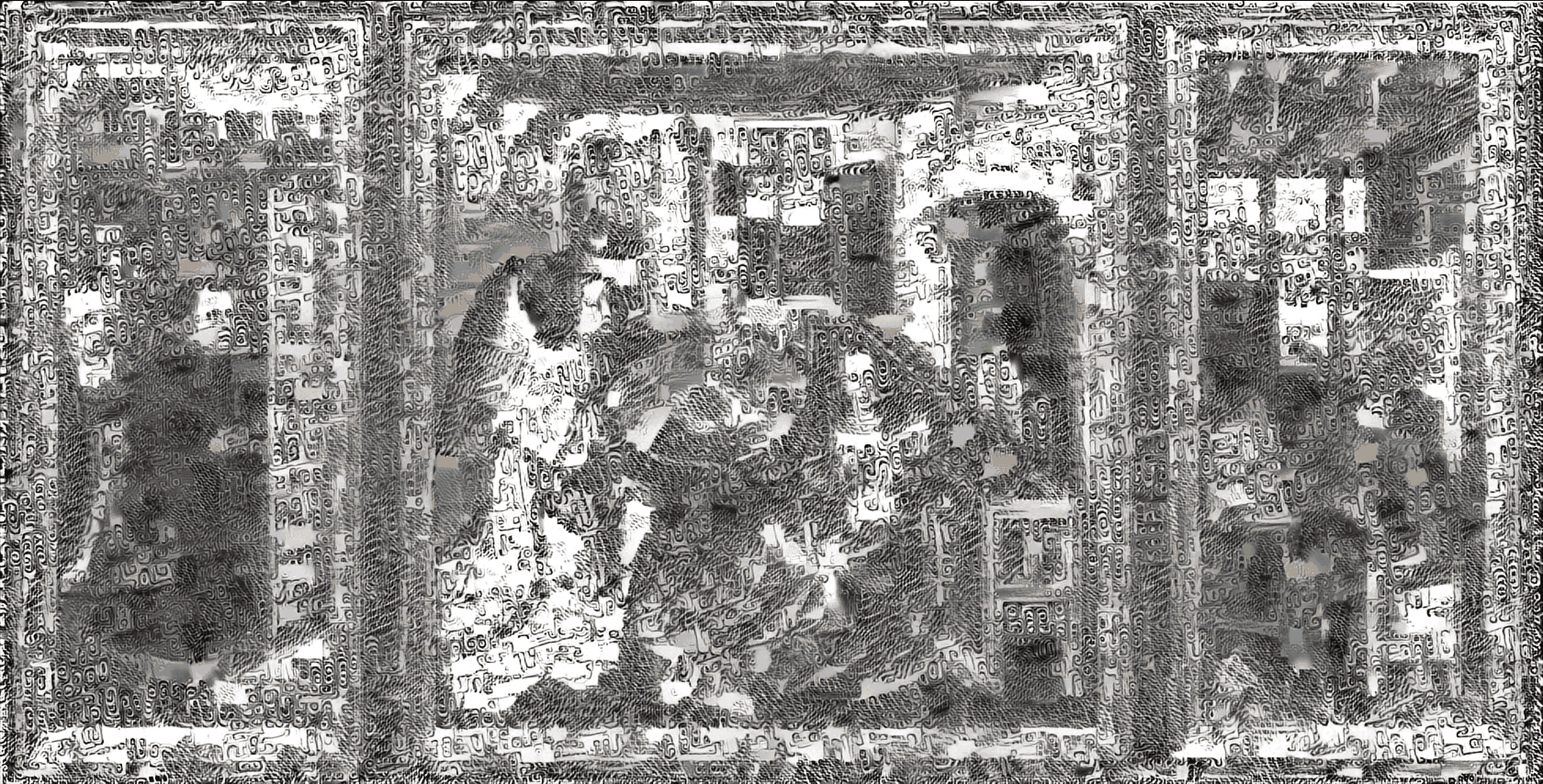 The Merode Altarpiece, (workshop of) Robert Campin
The Merode Altarpiece, (workshop of) Robert Campin









